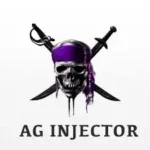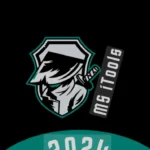Drone View ML D0wnload Latest Version
JUST NOW
8 MB
V2.17
Android 5+
100K
Description
Machine learning has transformed countless industries, but few applications are as visually striking and practically powerful as drone view ML. This technology combines the bird’s-eye perspective of unmanned aerial vehicles with sophisticated artificial intelligence algorithms to create solutions that were unimaginable just a decade ago.
From precision agriculture that can detect crop diseases before they’re visible to the human eye, to emergency response systems that can locate missing persons in vast wilderness areas, drone view ML is reshaping how we collect, analyze, and act on aerial data. The technology processes thousands of images per minute, identifying patterns, objects, and anomalies with accuracy that surpasses traditional methods.
This comprehensive guide explores the transformative potential of drone view ML, examining its key features, practical applications, and how you can access these powerful tools. Whether you’re a researcher, business owner, or technology enthusiast, understanding this intersection of aerial robotics and artificial intelligence could unlock new possibilities for your projects.
Understanding Drone View Machine Learning
Drone view machine learning represents the fusion of unmanned aerial vehicles with computer vision and artificial intelligence algorithms. Unlike traditional aerial photography that simply captures images, this technology actively analyzes visual data in real-time, extracting meaningful insights from patterns, shapes, colors, and movements.
The process begins when drones equipped with high-resolution cameras capture aerial footage or images. These visual inputs are then processed through trained machine learning models that can recognize specific objects, detect changes over time, or identify anomalies within the captured data. The algorithms have been trained on massive datasets, enabling them to distinguish between different types of vegetation, identify vehicle types, measure structural changes, or even track wildlife populations.
What makes this technology particularly powerful is its ability to cover large areas quickly while maintaining detailed analysis capabilities. A single drone flight can survey hundreds of acres in minutes, generating data that would take ground-based teams days or weeks to collect manually.
Key Features of Drone View ML Systems
Real-Time Object Detection and Classification
Modern drone view ML systems excel at identifying and categorizing objects within aerial footage. These systems can distinguish between different vehicle types, recognize building structures, identify various plant species, or detect human activity. The classification happens in real-time, allowing for immediate decision-making based on the analyzed data.
Change Detection and Monitoring
One of the most valuable features is the ability to detect changes over time. By comparing current aerial data with historical images, these systems can identify new construction, environmental changes, crop health variations, or infrastructure deterioration. This temporal analysis capability makes it invaluable for monitoring applications.
Automated Mapping and Surveying
Machine learning algorithms can process aerial imagery to create detailed maps, measure distances, calculate areas, and generate topographical data. This automated approach reduces human error and significantly speeds up traditional surveying processes.
Pattern Recognition and Anomaly Detection
Advanced algorithms can identify unusual patterns or anomalies that might indicate problems, opportunities, or points of interest. This could include detecting water leaks in agricultural fields, identifying potential security threats, or spotting equipment malfunctions in industrial facilities.
Multi-Spectral Analysis
Many drone view ML systems can process imagery beyond the visible spectrum, including infrared and near-infrared data. This capability enables applications like vegetation health analysis, heat signature detection, and material composition identification.
Practical Applications Across Industries
Agriculture and Farming
Precision agriculture has become one of the most successful applications of drone view ML. Farmers use these systems to monitor crop health, detect pest infestations, optimize irrigation, and predict harvest yields. The technology can identify stressed plants before visible symptoms appear, allowing for early intervention that can save entire crops.
Construction and Infrastructure
Construction companies employ drone view ML for site monitoring, progress tracking, and safety compliance. The technology can detect when workers aren’t wearing proper safety equipment, monitor material quantities, and identify potential structural issues during construction phases.
Environmental Monitoring
Environmental scientists use these systems to track wildlife populations, monitor deforestation, assess pollution levels, and study climate change impacts. The ability to cover large areas regularly provides researchers with unprecedented datasets for environmental analysis.
Emergency Response and Public Safety
First responders utilize drone view ML for search and rescue operations, disaster assessment, and crowd monitoring. The technology can quickly scan large areas for missing persons, assess damage after natural disasters, and identify potential safety hazards during emergency situations.
Mining and Energy
Mining operations use drone view ML for site surveying, equipment monitoring, and safety compliance. Energy companies employ the technology for pipeline inspection, solar panel monitoring, and wind turbine maintenance scheduling.
How to Access Drone View ML Technology
Commercial Software Platforms
Several companies offer comprehensive drone view ML platforms that combine hardware recommendations, software solutions, and cloud-based processing. These platforms typically provide user-friendly interfaces that don’t require extensive machine learning expertise.
Open-Source Solutions
For technically inclined users, open-source machine learning frameworks like TensorFlow and PyTorch offer the building blocks for creating custom drone view ML applications. These solutions require more technical knowledge but provide greater flexibility and customization options.
Cloud-Based Services
Major cloud providers offer machine learning services specifically designed for processing aerial imagery. These services allow users to upload drone footage and receive processed results without maintaining their own computing infrastructure.
Hardware Integration
Many drone manufacturers now offer integrated ML capabilities directly in their hardware. These solutions process data on-board the drone, reducing bandwidth requirements and enabling real-time decision-making during flights.
Getting Started: Download and Setup Process
Most drone view ML platforms follow a similar setup process. Users typically begin by creating an account on the provider’s website and selecting an appropriate service tier based on their processing needs and budget requirements.
The next step usually involves downloading specialized software or mobile applications that interface with both the drone hardware and the ML processing services. Many platforms offer comprehensive setup guides and video tutorials to help new users configure their systems properly.
Data processing often happens through cloud-based services, meaning users upload their aerial imagery to secure servers where machine learning algorithms analyze the content and return processed results. Some platforms offer real-time processing capabilities, while others focus on batch processing for more complex analysis tasks.
Frequently Asked Questions
What types of drones work best with ML applications?
Most modern drones with high-quality cameras can work with machine learning applications. However, drones with stabilized gimbals, high-resolution sensors, and longer flight times typically produce better results. Commercial-grade drones often provide more reliable platforms for professional ML applications.
How accurate are drone view ML systems?
Accuracy varies depending on the specific application, training data quality, and environmental conditions. Well-trained systems often achieve accuracy rates above 90% for object detection tasks, though this can vary significantly based on factors like image resolution, lighting conditions, and the complexity of the detection task.
Do I need machine learning expertise to use these systems?
Many commercial platforms are designed for users without extensive ML backgrounds. These solutions provide user-friendly interfaces and pre-trained models for common applications. However, custom applications or specialized use cases may require more technical expertise.
What are the data privacy and security considerations?
Data privacy depends on the specific platform and deployment method. Cloud-based solutions involve uploading imagery to third-party servers, while on-device processing keeps data local. Users should carefully review privacy policies and consider their specific security requirements when selecting a platform.
How much does drone view ML technology cost?
Costs vary widely based on the complexity of the application, processing volume, and deployment method. Simple cloud-based services might start at under $100 per month, while comprehensive enterprise solutions can cost thousands of dollars monthly. Open-source solutions reduce software costs but require more technical investment.
Can these systems work in real-time during flights?
Many modern systems offer real-time processing capabilities, though the complexity of analysis affects processing speed. Simple object detection can often happen in real-time, while more complex analysis tasks might require post-flight processing.
Conclusion
Drone view machine learning represents just the beginning of what’s possible when we combine aerial robotics with artificial intelligence. As both technologies continue advancing, we can expect even more sophisticated applications that will further transform industries and create entirely new possibilities for aerial data analysis.
The convergence of 5G networks, edge computing, and more powerful ML algorithms promises to make real-time aerial intelligence even more accessible and powerful. Organizations that begin exploring these technologies now will be best positioned to leverage future advancements and maintain competitive advantages in their respective fields.
Consider starting with small pilot projects to understand how drone view ML might benefit your specific applications. The technology has matured to the point where experimentation is both affordable and accessible, making it an ideal time to explore its potential. For More Games And Injector Always visit Apksbazar.com
Download links
How to install Drone View ML D0wnload Latest Version APK?
1. Tap the downloaded Drone View ML D0wnload Latest Version APK file.
2. Touch install.
3. Follow the steps on the screen.





